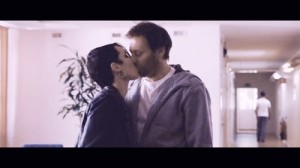A few days ago a friend told me that Ursula Le Guin died. There’ve been obits and eulogies, and repostings of her wonderful & incendiary award-acceptance speech at the National Book Awards in 2014. She accepted this Very Big Deal award in the name of all the other writers of science fiction and fantasy, those ‘writers of the imagination’ who had been passed over in the past 50 years in favor of ‘the so-called realists’. She skewered ‘the profiteers’, who included her own publishers; and finished by saying that authors write, not for profits, but for freedom. Her speech was just one instance of how she walked her talk; eulogies have listed others.
What I’d like to add is that Ursula also walked her talk as a teacher. She cared about teaching, she cared about writing, and she cared about freedom; and all three passions came through in her writing workshops, where she acted as a facilitator instead of as the ultimate authority to whom we must defer, despite attempts to lionize her. She had been my favorite author and role model for over a decade when I met her; she had a lot to live down to for me to see her as human. She did so within five minutes.
I had the good fortune to take two writing workshops with her in the late ’80s and early ‘90s. As an art school graduate and writing group participant I knew all about gut-wrenching critiques that make people want to bite (or wail, or hide, or bang their head against a wall). But as a facilitator Ursula created an environment for critiques full of humor and enlightenment for everyone in the circle, while those who had been in the hot seat left to go rework their stories, or finish them, or write new ones, with the focused high energy that comes from being heard. The safe and inspiring critique — which encouraged an openness to feedback as well as discernment about that feedback — was also egalitarian. Maybe that was why her workshops felt safe and inspiring, maybe that’s why we could learn – everyone’s voice counted.
In a circle of students critiquing a short story, Ursula took care to be only one voice. She was always interested in how different people heard a story, what worked for which people, since what often happened was the group would divide, but never with the same people on the same side, over what the writer (who was not allowed to speak) was saying, and whether or not it worked, and how it might work better. This made it clear that we were not writing for everyone (if only two people in the circle got it, you might realize that you needed to rewrite, or you might realize that those two were the people you were writing for), that writing was not a popularity contest, and that writing was not a way to get patted on the head by a prominent critic. (I was probably not the only one to regard Ursula that way, even though she refused the role.*)
She also was open to feedback/critique about her own work. I saw an example in the workshops, where she once gave us one of her own short short pieces to critique (and revised it in response), but readers can also see it in the way Earthsea changes in the books that follow the trilogy. In the later books she retells the history of magic and the role of gender, and ends with a story that completely alters the relationship of life and death in that land. You can also see her openness to feedback in the change in generic pronouns in a short story about the planet Winter, written in response to feminist readers telling her that the use of ‘he’ in her award-winning novel, The Left Hand of Darkness, didn’t make them think in terms of androgyny, but of men. Ursula came at the problem from a different angle in her revisions for the audio version of the novel, which she read herself for books on tape. (And if anyone can find me one, please let me know.)
In short: She was an open, generous, warm hearted, no-bullshit woman. We were lucky to have had her.
*Ursula did assume the role of expert as a writing instructor – she passed on what she had learned about how to write (see Steering the Craft for a book version of her workshops).












